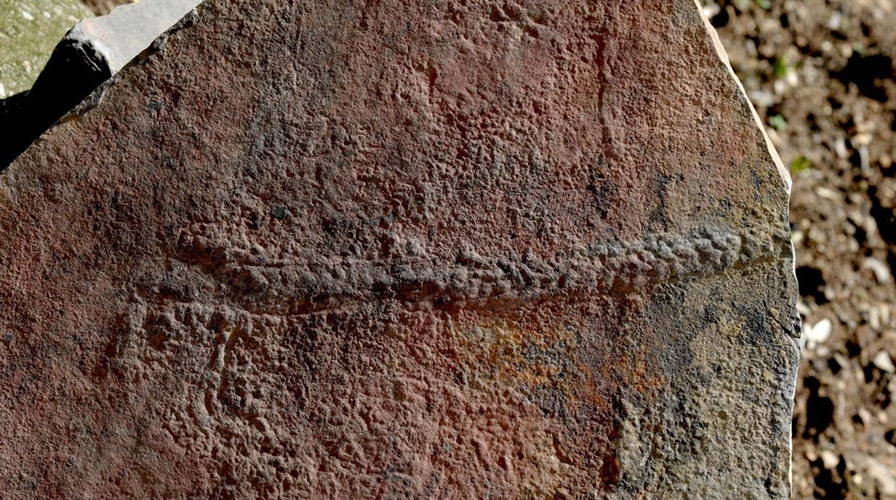Fox News Flash top headlines for Sept. 5
Fox News Flash top headlines for Sept. 5 are here. Check out what's clicking on Foxnews.com
The fossil of a worm that lived 550 million-years-ago may be the earliest known evidence of an animal walking on the Earth's surface, according to a new study.
The research, which has been published in Nature, looks at the "death march" of Yilingia spiciformis, which means "spiky Yiling bug" in Chinese. Researchers suggest that animals have walked since the Ediacaran period, which started 635 million years ago, earlier than previously thought.
"This discovery shows that segmented and mobile animals evolved by 550 million years ago," one of the study's co-authors, Shuhai Xiao, a professor of geosciences at Virginia Tech, said in a statement obtained by Fox News. "Mobility made it possible for animals to make an unmistakable footprint on Earth, both literally and metaphorically."

A fossilized trail of the animal Yilingia spiciformis, dating back 550 million years. (Credit: Virginia Tech College of Science)
MASS EXTINCTION EVENT 2 BILLION YEARS AGO KILLED 99 PERCENT OF LIFE ON EARTH, STUDY SAYS
Xiao continued: "Those are the kind of features you find in a group of animals called bilaterans. This group includes us humans and most animals. Animals and particularly humans are movers and shakers on Earth. Their ability to shape the face of the planet is ultimately tied to the origin of animal motility."
Y. spiciformis had a thin body, up to 4 inches in length, 1 inch wide and was comprised of 50 symmetrical segments. Found in China's Yangtze Gorge, along with 34 other fossils of the same species, researchers believe Y. spiciformis is related to a group of anthropods that includes crustaceans and millipedes or annelids.
By contrast, modern-day earthworms are typically a few inches long, but in some cases, have been known to grow up to 14 inches, according to National Geographic.
Rachel Wood, a professor in the School of GeoSciences at the University of Edinburgh, who was not involved with the study, said, “This is a remarkable finding of highly significant fossils. We now have evidence that segmented animals were present and had gained an ability to move across the sea floor before the Cambrian, and more notably we can tie the actual trace-maker to the trace. Such preservation is unusual and provides considerable insight into a major step in the evolution of animals.”





















